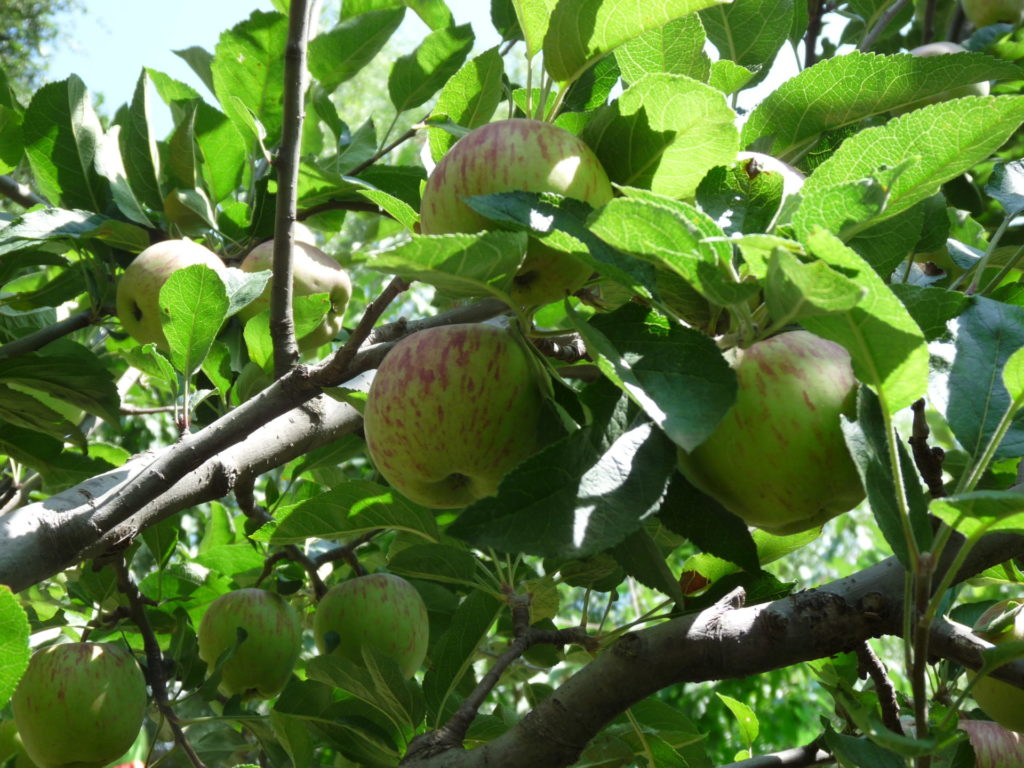When one visits the Kullu Valley, one notices especially the bright red-yellow apples, which radiate juicy through the favorable trees. In the month of August the harvest begins! A wonderful time in Manali.
In addition to the apples, the farmers also have other orchards here, where peaches, cherries, pears and nectarines are grown. However, most of the fields are taken up by the apples- a good cash crop.

Apples were brought to through the British- that is also true for trout and tea.
The climate here in the valley is very similar to the European climate, even slightly warmer and is excellent for apple cultivation and, in addition to tourism and hydroelectric power plants, provides the resident Indians here with good incomes and an above-average Indian standard of living.
In the following a small interview with Jogi, whose family owns apple orchards.

Hello Jogi, for how long have the apple orchards been in your family?
Jogi: About 40 years. My grandfather had started. He was a very wealthy man. The plantations are always passed on from generation to generation to the sun. As a result, the size of the plantations that are now owned by my father has been reduced.
How many plantations do you have?
Jogi: 5 plantations with 402 trees. That’s an average amount here. Only a few farmers have larger and more plantations.
What is the apple market like in India?
Jogi: Very good. The Kullu Valley is one of the few areas where apples are grown. Almost every family here owns plantations. The apples are exported to all parts of India. If we have a good season, we bring one or two truckloads to Agra.
How many varieties are there?
Jogi: Around 50 varieties are grown here. On our orchards are 10 different varieties including my favourite: the Golden Apple. He’s a bit more acidic, which I like.
Does your family also make other products from the apples?
Jogi: No, we just eat them like that or make juice from time to time.
Who is taking care of the plantation?
Jogi: My father manages everything and often works along with the labour people. Whenever I’m there, I help. We also employ 10 workers, most of them from Nepal.
What does the apple work look like during a year?
Jogi: In January and February we prepare the earth and enrich it with humus. We also prune the trees and brush them later with lime.
In April the trees are in their bloom and we start pollinating.
Then, unfortunately, we have to spray the apples with pesticides 5-6 times. Depending on the amount of rain in the monsoon, it can be also more.
In August and September we harvest the apples, pack them and send them south.
It’s a good work
Thank you Jogi





